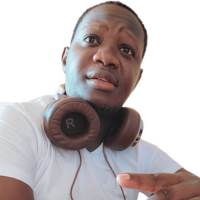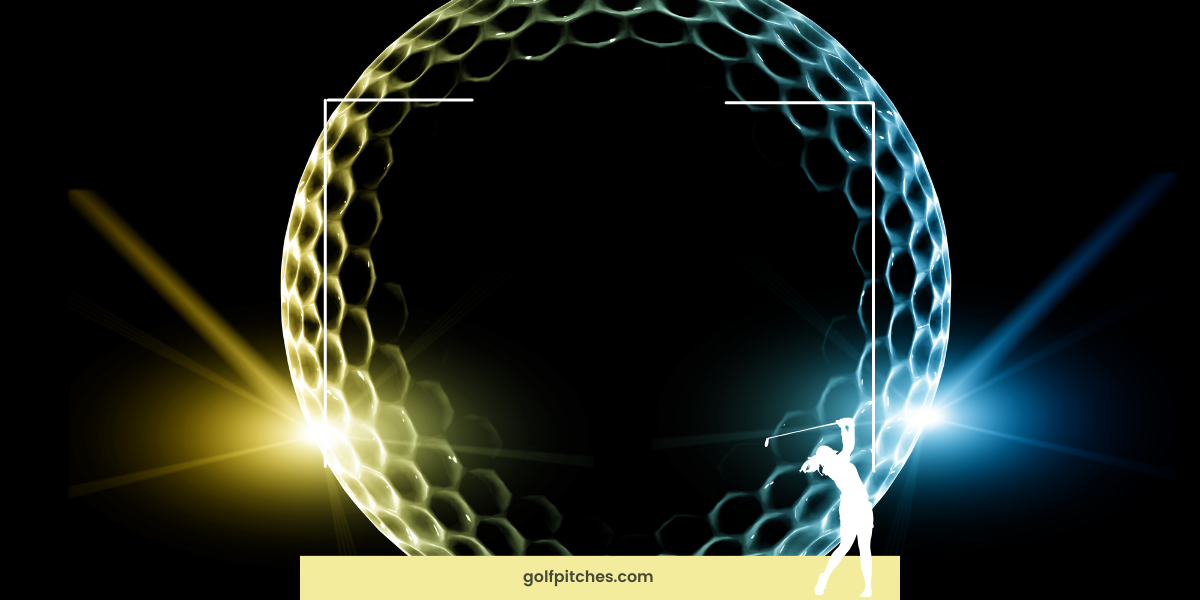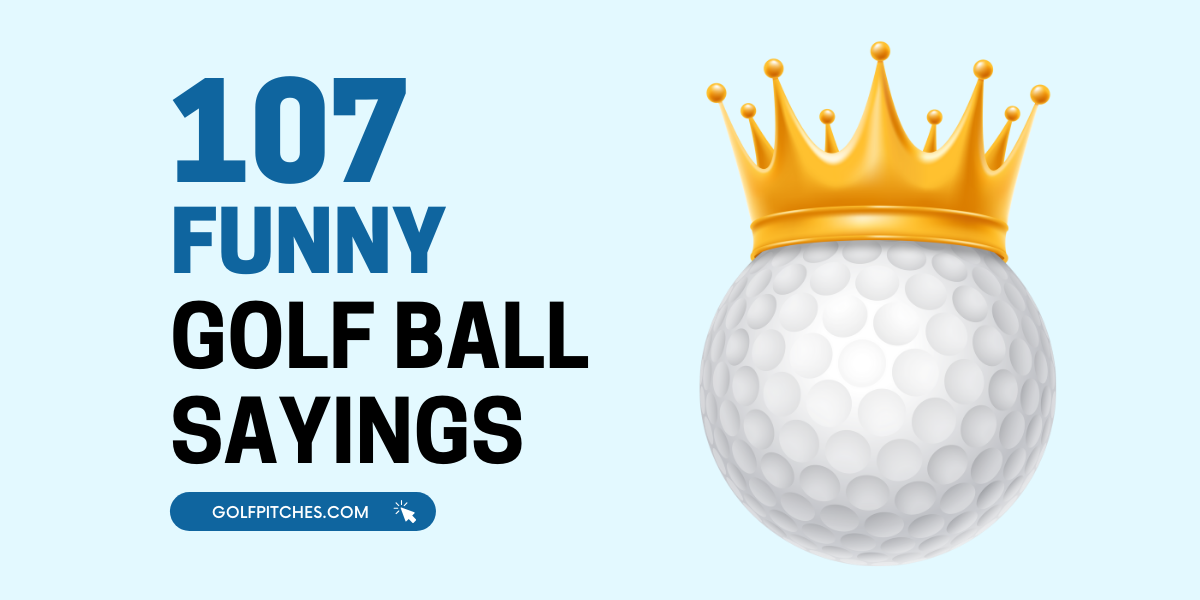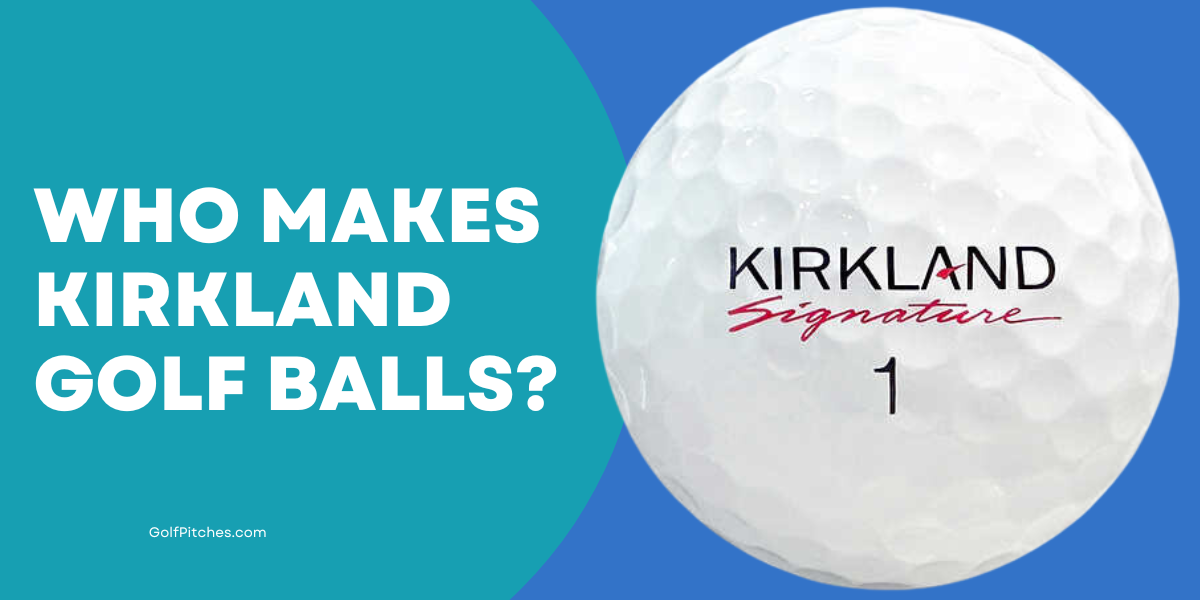Best Golf Ball Color for Fall


As the greens transition from the lush days of summer to the crisp, leaf-strewn fairways of fall, there’s more to consider than just swapping out your short sleeves for a windbreaker.
When autumn rolls in, bringing along its vibrant foliage and dimming light, choosing the right color for your golf ball can mean the difference between a round of leisure and one of frustration.
Ever find yourself squinting against the autumn sun, desperately trying to spot your ball against a backdrop of fallen leaves?
Or maybe you’ve experienced that sinking feeling when your tee shot disappears into the dusky shadows faster than you can say “double bogey.” Well, you’re not alone, and the culprit may not just be your swing—it could be the color of your golf ball.
Yes, you read that right.
The color of your golf ball can have a massive impact on your game, especially during the fall season when Mother Nature is painting the course in various shades of orange, brown, and gold.
The changing foliage, the angle of the sun sitting lower in the sky, and the frequent overcast conditions can all conspire to make ball tracking a real challenge. Trust me, the last thing you want is to lose sight of your Titleist Pro V1 just because it’s camouflaged by a pile of leaves.
That’s why I’ve put together this comprehensive guide. As someone who’s spent years on the green—both as an avid golfer and as an instructor—I’ve picked up a few tricks when it comes to choosing the best golf ball color for the conditions you’re playing in.
In the following sections, we’ll delve deep into the science of visibility, the pros and cons of various golf ball colors, and expert insights to help you make the most informed choice this fall season.
So grab your favorite 9-iron and let’s get to it. Choosing the right golf ball color might just be the game-changer you’ve been looking for!
Best Golf Ball Color for Fall - Ranked from Best to Worst
- Yellow: Tops the list for its superior visibility in a variety of lighting conditions
- Orange: Effective for visibility but can blend in with autumn leaves
- Pink: Stands out well against both green and brown backgrounds, but could be hard to spot when leaves turn to similar shades.
- White: Can be harder to track in lower light conditions
- Red: Provides a decent contrast but can be challenging to spot when scattered among similarly-colored leaves.
- Metallic Silver or Gold: Particularly effective in capturing any available light during twilight conditions, but may cause glare during brighter moments.
- Blue/Green: Least recommended for fall due to their tendency to blend in with the grass or foliage
Ranking: Best to Worst Golf Ball Colors for Fall

Yellow Golf Balls - The Gold Standard of Fall
Yellow is the best golf ball color for fall. With brands like Srixon offering the Z-Star XV in “Tour Yellow,” this color provides excellent visibility against both green fairways and the assorted shades of fallen leaves.
Research studies like those by Dr. James Murphy at Rutgers University have shown that golfers struggle with color discrimination as ambient lighting diminishes, which is a frequent scenario in fall due to shorter daylight hours.
Additionally, experts like Dr. Alan Reichow, who has consulted for Nike, have explored how the angle of sunlight impacts visibility.

Best Yellow Golf Balls
If you’re convinced that yellow is the best golf ball color for fall, here are some top brands to consider:
- Srixon Z-Star XV Tour Yellow: Specifically designed for visibility and performance.
- Titleist AVX Optic Yellow: Offers excellent visibility while not compromising on performance features.
- Callaway Chrome Soft Yellow: Known for its soft feel and excellent visibility.
Yellow, with its higher wavelength, tends to be more visible in a variety of light conditions, making it a strong contender for the best golf ball color for fall.
There is a growing body of evidence supporting the efficacy of yellow golf balls in fall conditions.
Pros like Graeme McDowell and coaches such as Butch Harmon often recommend yellow for its high visibility and ease of tracking both on the ground and in the air.
And brands like Srixon have even designed balls like the Z-Star XV in “Tour Yellow” specifically to optimize visibility.
When pitted against other popular golf ball colors like white, orange, and pink, yellow often emerges as the most versatile option for fall.
- Yellow vs. White: White balls can be hard to distinguish in low light conditions, which are more frequent in fall.
- Yellow vs. Orange: While orange is good for contrast, it can blend in with fallen leaves.
- Yellow vs. Pink: Pink provides good contrast but is less universally accepted and can be harder to track in the air.
Orange Golf Balls: The Double-Edged Sword
Bright orange can be incredibly effective but comes with a caveat—it can blend in with fallen leaves.
With its vividness and ability to stand out against green and brown, orange golf balls are worthy of consideration in fall.
Brands like TaylorMade have been innovative in developing shades of orange that pop out against this seasonal backdrop. Consider their Project (a) Orange for your autumn rounds.
Best Orange Golf Balls
If you’re contemplating making orange your choice for the best golf ball color for fall, consider these brands:
- TaylorMade Project (a) Orange: Designed for better visibility and excellent playability.
- Callaway Superhot Bold Orange: Known for its exceptional distance and visibility.
- Volvik Vivid Matte Orange: Offers a unique matte finish that reduces glare and enhances visibility.
Orange golf balls present a compelling option for those looking to optimize their play during the fall season.
While they may have some limitations—such as blending in with similar-colored leaves—their benefits in various lighting conditions and their general visibility make them a noteworthy contender for the title of the best golf ball color for fall.
- Orange vs. Yellow: Yellow may fare slightly better in leaf-covered terrain but loses out to orange in overcast conditions.
- Orange vs. White: Orange is more visible in dim light and fog, common in fall, whereas white can be challenging to locate.
- Orange vs. Multi-color: Multi-color balls like Callaway’s Chrome Soft Truvis can offer varied visibility but lack the consistent visibility that orange offers.
3. White: The Reliable Choice
White is a classic but can lose some of its luster when sunlight begins to wane.
Renowned researchers like Dr. Jennifer Taylor, who has consulted for the PGA, have long emphasized how white’s natural contrast against green makes it a preferred choice for many conditions.
However, as we move into fall, the colorful array of leaves and fading light provide a different backdrop that challenges white’s dominion.
Nonetheless, the reliable visibility of balls like the Titleist Pro V1 means that white should not be completely dismissed when considering the best golf ball color for fall.
Related Article: Why Are Golf Balls White?

Best White Golf Balls for Fall
If you’re a traditionalist at heart or convinced white remains the best golf ball color for fall, consider these tried-and-true options:
- Titleist Pro V1: The gold standard for many, offering both performance and decent visibility.
- Bridgestone Tour B X: Known for its feel and control, it also offers reasonable visibility.
- Srixon Q-Star: A more budget-friendly option that doesn’t compromise too much on visibility or performance.
White golf balls are a classic for a reason. Many professionals, from Jack Nicklaus to Tiger Woods, have traditionally opted for white due to its general reliability and the broad range of ball options.
However, when it comes to less-than-ideal lighting conditions—a hallmark of fall days—white may lose some of its advantages.
The same principles that make white so visible in full sunlight might work against it in the softer, more diffuse light of a fall afternoon.
- White vs. Yellow: In well-lit conditions, white holds its own, but as lighting diminishes, yellow gains the upper hand.
- White vs. Orange: White tends to outperform orange in fall when orange leaves are a factor but loses out in dim light.
- White vs. Green/Blue: While green and blue balls are not recommended for fall, white fares much better in almost all situations.
4. Pink Golf Balls
Pink is an unconventional but effective choice for fall golf.
Though not a mainstream choice, some professionals and golf influencers have embraced the pink golf ball. LPGA player Paula Creamer, also known as “The Pink Panther,” often opts for a pink ball when conditions allow.
Golf instructors like Michael Breed suggest that using colored balls, including pink, can add an element of fun while reducing the stress associated with stricter competitive conditions.
Providing a good contrast against most natural elements, pink balls like Wilson’s Staff Duo Soft Optix Pink make for a fun and functional selection.

- Pink vs. Yellow: Yellow is generally more visible in varying conditions, but pink offers an advantage when autumn leaves are predominantly yellow or orange.
- Pink vs. White: Pink outperforms white in overcast or foggy conditions but falls short under bright sunlight.
- Pink vs. Orange: Pink offers a unique advantage as it contrasts well against both the sky and autumn foliage, unlike orange, which can blend with leaves.
If you’re inclined to make pink your best golf ball color for fall, consider the following brands:
- Pinnacle Soft Pink: Designed for soft feel and low spin for control.
- Bridgestone e12 Soft Pink: Known for its distance and softer feel.
- Volvik Vivid Pink: A matte-finished ball that reduces glare and enhances visibility.
5. Multi-Color/Truvis
When it comes to visibility and performance on the golf course, color matters.
But what if one color isn’t enough?
Enter multi-color and Truvis golf balls, which feature not just one but multiple colors on the surface.
As the golfing world diversifies its color palette, multi-color balls are becoming increasingly popular. But how do these colorful creations fare in the ever-changing conditions of fall?
Multi-color balls like Callaway’s Chrome Soft Truvis can be both eye-catching and functional, particularly when they incorporate shades like red and black, which create good contrast against autumn hues.
Multi-color and Truvis golf balls offer a unique blend of visibility and performance that makes them well-suited for autumn’s variable conditions.
From twilight rounds to foggy mornings, these balls are designed to be seen.
Comparative Analysis: Multi-Color vs. Other Colors
- Multi-Color vs. White: In variable fall lighting, multi-color balls tend to offer better visibility, particularly in twilight conditions.
- Multi-Color vs. Yellow or Orange: Multi-color balls can offer the benefits of these brighter colors without the downsides, like blending into fall foliage.
- Multi-Color vs. Novelty Colors (Pink, Blue, etc.): While fun, these colors usually don’t offer the same level of all-round visibility that a well-chosen multi-color pattern can provide.
If you’re leaning towards multi-color as the best golf ball color for fall, these are your best bets:
- Callaway Chrome Soft Truvis: A high-performing ball with excellent visibility, thanks to its signature soccer ball-like design.
- TaylorMade Project (s): Offers a matte finish with contrasting colors for better visibility.
- Volvik Vivid: Known for its bright color combinations and matte finish, it’s an excellent option for fall play.
6. Green/Blue: Least Recommended
Green and blue golf balls are generally a no-go in the fall.
These colors often blend with the grass and foliage, making them harder to spot.
When set against autumnal colors like orange, brown, and red, however, they can offer a moderate contrast, especially when the leaves have fully turned.
But, ultimately, if optimum visibility is your main concern, traditional colors like white, yellow, or orange may serve you better in autumn’s varying conditions.
7. Metallic: The Jury’s Still Out
Metallic golf balls, like the Volvik Crystal, aim to catch and reflect light, but their effectiveness can be highly variable depending on the lighting conditions.
Unlike standard colors, the reflective nature of metallic balls can either enhance or diminish their visibility depending on external conditions—making them a particularly interesting choice for fall.
Further research and personal testing are advised.
If you’re interested in a high-tech, visually striking alternative as the best golf ball color for fall, metallic balls might be your match. Here are some top picks:
- Chromax M5 Metallic: Offers not just shimmer but also solid performance stats.
- Vice Pro Soft Red: Provides a metallic sheen and is well-regarded for its playability.
- Nike RZN Black: Though not fully metallic, it offers a reflective coating that enhances visibility.
Factors That Affect Golf Balls Visibility in Fall
As the seasons shift and we embrace the crisp air and scenic beauty of autumn, several factors converge to challenge our quest for the best golf ball color for fall. It’s not just the fall foliage that’s in play here; we’re contending with unique lighting conditions, varied course features, and even our own personal circumstances. So, let’s break down these elements one by one and see how they impact your game.
Cloud Cover
Fall brings with it an increased likelihood of overcast days.
These conditions can often make lighter-colored balls like white or yellow less visible, while a bolder color like orange could provide a better contrast.
Shorter Days
With the sun setting earlier, you may find yourself wrapping up your back nine in softer, dimmer light. This impacts visibility significantly. According to a study by Dr. James Murphy at Rutgers University, golfers generally struggle with color discrimination as lighting diminishes. This is a key consideration when selecting the best golf ball color for fall.
Sun Angle
During fall, the sun is lower in the sky, which can lead to direct glare, impacting your ability to spot your ball.
A series of experiments by Dr. Alan Reichow, an optometrist who has worked closely with Nike, demonstrated how lower-angle sunlight can produce glare on a shiny object, making matte-finish golf balls like Callaway’s Chrome Soft a potentially better option for late-season rounds.
Leaf Fall
The myriad of falling leaves in shades of red, orange, and brown create a natural obstacle for ball spotting.
Brands like TaylorMade have specifically designed “Project (a) Orange” golf balls to counter this issue, providing an orange hue that contrasts sharply with typical leaf colors.
Dew and Moisture
Fall mornings often greet us with dew-covered fairways. Dew can cause light to scatter, affecting visibility.
In such cases, you may want to opt for a higher-visibility ball with a matte finish, like the Volvik Vivid, to minimize light scattering.
Grass Color Changes
As the season progresses, grass often loses its rich summer green, transitioning to a lighter or even brownish hue.
This is where brightly colored balls, endorsed by pros like Bubba Watson, can provide that extra edge in visibility.
Age and Vision
As we age, our ability to distinguish between colors diminishes.
Players in the senior circuit, like Bernhard Langer, often opt for balls that offer better visibility in varied conditions, affirming the importance of this factor in choosing the best golf ball color for fall.
Skill Level
Your handicap can also affect your choice.
High-handicap players may benefit from opting for highly visible balls as they’re more likely to land in the rough or other hard-to-see areas.
By analyzing these multiple layers that affect golf ball visibility in fall, we get a nuanced understanding that goes beyond the basic premise of choosing a golf ball color.
The best golf ball color for fall is not a one-size-fits-all proposition. It is a carefully considered decision influenced by a blend of environmental, personal, and even technological factors.
Keep these in mind as you tee up this fall, and you’ll not only save time searching for your ball but also perhaps shave a few strokes off your game.
The Science Behind Color Visibility
When we talk about the best golf ball color for fall, it’s not just personal preference or fashion sense we’re considering; there’s a scientific reason for picking one color over another.
But before we get into the weeds—or the rough, so to speak—let’s understand some basic optics and color science.
How the Human Eye Perceives Color
The human eye perceives colors through cells called cones. These cones are sensitive to long, medium, and short wavelengths of light, roughly translating to the colors red, green, and blue, respectively.
A study published in the journal “Optometry and Vision Science” illustrates that the eye is most sensitive to green wavelengths.
But here’s the rub: golf courses are predominantly green, so a green golf ball would be a poor choice for visibility.
In fall, you’ve got the added complexity of leaves in shades of red, yellow, and orange.
Color Contrast and Visibility
It’s all about contrast. An object is easier to spot when it has a high contrast against its background.
According to a study by Dr. Jean Bennett, a renowned ophthalmologist, color contrast can significantly influence visual search times.
For golfers, this means finding your ball faster and getting on with your game.
In a season where fallen leaves create a kaleidoscope of colors on the ground, finding the best golf ball color for fall becomes all the more important.
Real-world Golfing Scenarios
Brands like Titleist, Callaway, and Srixon have been pioneering the science of color visibility in golf balls.
Take, for instance, Titleist’s “AVX Optic Yellow” balls. These balls were developed based on studies showing that yellow is one of the most easily detectable colors against a green backdrop.
With autumn bringing in red and orange leaves, however, even the “Optic Yellow” could find competition from something like Callaway’s “Superhot Bold Orange.”
The specific shade of orange is designed to create contrast, not just against green grass but also against the darker hues that fall brings.
The Role of Lighting Conditions
Natural light conditions are crucial in choosing the best golf ball color for fall. The sun is lower in the sky during autumn, creating more glare and casting longer shadows.
Lighting conditions have been extensively studied, notably in a paper by Dr. Kenneth Fuld, who examined how the angle and quality of light affect color visibility.
For golfers, the golden hours of late afternoon might just demand a different color than what works on a cloudy morning.
High-tech Solutions for Improved Visibility
In the modern era, technology is aiding visibility in fascinating ways.
Brands like Volvik offer balls with a metallic finish, aiming to catch and reflect light, thereby increasing visibility. These are backed by studies on luminance and contrast, factors that affect how easily the human eye can locate an object.

Conclusion:
What’s the Best golf ball color for fall?
Choosing the right golf ball color is more than just a matter of personal preference; it’s a strategic decision that can significantly impact your game. As we’ve explored, the transition from summer to fall brings a multitude of changes—shorter days, variable lighting, and a kaleidoscope of colors on the course. These variables make the selection of the best golf ball color for fall an essential consideration for any serious golfer.
Yellow, with its unmatched visibility in varying light conditions, takes the top spot on our list. Traditional white remains a steadfast choice, although it does present some challenges as daylight wanes. Metallics introduce a fascinating dimension, especially for those looking to capture the last rays of a setting sun. Other colors like pink, orange, and red have their merits but come with specific limitations that can’t be ignored when leaves start to fall.
But beyond the science and expert opinions, your comfort and familiarity with a particular color shouldn’t be overlooked. Often, the psychological edge gained from using a familiar ball can outweigh any scientific advantages another color may offer. Brands like Titleist, Callaway, and Chromax continually innovate to meet the evolving needs of golfers, and it’s worth testing different hues to find your perfect match.
So as the season shifts and you find yourself teeing up amidst a backdrop of golden leaves and crisp autumn air, remember that the color of your golf ball is more than just an aesthetic choice. It’s a small but crucial element that, when carefully selected, can bring both visual pleasure and a competitive edge to your fall golfing experience. Choose wisely, and may your autumn rounds be as colorful and rewarding as the season itself.

Patrick Mahinge is a golf enthusiast and the chief editor of Golf Pitches, a website that delivers innovative and data-driven golf product reviews. With a keen eye for detail and a passion for the sport, Patrick has transformed Golf Pitches into a trusted source of information for golfers worldwide. Patrick's expertise lies in his ability to dissect complex golf equipment and present his findings in an engaging, easy-to-understand manner. His reviews are not just informative, but they are also backed by rigorous data-driven methodologies, making them a trusted resource for golf enthusiasts and professionals alike..


